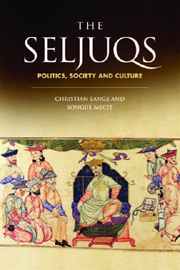INTRODUCTION
Published online by Cambridge University Press: 12 September 2012
Summary
The Seljuqs, who ruled over the lands of Persia and large swaths of the Islamic world in the 5th–7th/11th–13th centuries, have been the object of continued interest by historians of Islam. However, despite the many important developments and innovations traceable to the Seljuq period, such as the institutionalisation of sultanic authority vis-à-vis the caliph, the introduction of the atabegate, the restructuring of the system of fiefs, the establishment of institutions of higher learning and the concomitant consolidation of the Sunni legal schools, the proliferation of translocal Sufi networks organised in lodges, and significant advances in art and architecture due to Seljuq patronage, the Seljuqs remain one of the understudied Muslim dynasties. Nor have the long-term ramifications of the Seljuq coming to power, their formative inflence on later socio-political orders and their reception history among them received adequate scholarly attention. Not only did a branch of the Seljuq family take over formerly Byzantine and Armenian territories in Anatolia, founding the Rum Seljuq sultanate (c. 483–707/1081–1307) within roughly the same geographical boundaries as the modern Republic of Turkey. Indeed, the Seljuqs can be credited with entertaining structures of political, social and cultural organisation that long outlasted them. The Seljuqs thus acted as switchmen who, while not in each instance setting new developments in motion, irreversibly changed the course of Islamic history. This volume aims to contribute to the growing interest in this pivotal dynasty.
- Type
- Chapter
- Information
- The SeljuqsPolitics, Society and Culture, pp. 1 - 10Publisher: Edinburgh University PressPrint publication year: 2011



